How to Start a Successful Freelance Career from Home

Building a Strong Online Portfolio
So you’ve decided to take the plunge and start a freelance career from the comfort of your own home. Congratulations! Working as a freelancer can be a rewarding and flexible way to earn a living, but it’s important to set yourself up for success from the get-go. One of the first steps in building a successful freelance career is creating a strong online portfolio.
Your online portfolio is essentially your digital resume. It’s where potential clients can go to see examples of your work, learn more about your skills and experience, and get a sense of your style and personality. Having a well-curated portfolio can help you stand out from the competition and attract the right kind of clients.
The first thing you’ll want to do when building your online portfolio is to gather samples of your work. This could include writing samples, design projects, photography, or any other type of work that showcases your skills. Choose a variety of pieces that demonstrate your range and expertise, and make sure they are high-quality and polished.
Once you have your samples gathered, it’s time to create a professional-looking website to showcase them. There are plenty of website builders out there that make it easy to create a sleek and professional portfolio, even if you don’t have any web design experience. Make sure your website is easy to navigate, visually appealing, and mobile-friendly.
When it comes to organizing your portfolio, think about what potential clients might be looking for. Consider categorizing your work by type, industry, or skill set to make it easy for visitors to find what they’re looking for. You may also want to include a brief bio or “about me” section that highlights your experience, skills, and what sets you apart from other freelancers.
In addition to showcasing your work, it’s also important to include testimonials or reviews from past clients. Social proof is a powerful tool in building trust with potential clients, so don’t be shy about asking satisfied clients to provide feedback that you can feature on your website.
Finally, don’t forget to include a way for potential clients to contact you. This could be a simple contact form, an email address, or a link to your social media profiles. Make it easy for clients to reach out to you with inquiries or project requests.
Building a strong online portfolio is an essential step in starting a successful freelance career from home. By showcasing your best work, creating a professional website, and including testimonials from satisfied clients, you can set yourself up for success and attract the right kind of clients. So roll up your sleeves, gather your best work, and get started on creating a portfolio that will help you stand out in the competitive world of freelancing.
Finding and Nurturing Client Relationships
So, you’ve decided to take the plunge and start a freelance career from the comfort of your own home. Congratulations! Working as a freelancer can be incredibly rewarding, allowing you to set your own schedule, choose your clients, and work on projects that truly inspire you. However, one of the biggest challenges of freelancing is finding and nurturing client relationships. In this article, we’ll explore some tips and tricks to help you build a successful freelance career by cultivating strong relationships with your clients.
First and foremost, it’s important to remember that communication is key when it comes to working with clients. Make sure to respond to emails and messages in a timely manner, and always keep your clients in the loop about the progress of their projects. Clear and open communication will help to build trust and confidence in your abilities as a freelancer.
Another important aspect of nurturing client relationships is setting clear expectations from the start. Make sure to discuss project timelines, deliverables, and payment terms with your clients before starting any work. This will help to avoid any misunderstandings or miscommunications down the line and ensure that both you and your client are on the same page.
In addition to setting clear expectations, it’s also important to deliver high-quality work on time. Your clients are entrusting you with their projects, so it’s crucial to meet deadlines and produce work that meets or exceeds their expectations. Going above and beyond for your clients will not only help to build a strong reputation as a freelancer but also increase the likelihood of repeat business and referrals.
Networking is another essential component of building a successful freelance career. Attend industry events, join online communities, and reach out to potential clients through social media platforms like LinkedIn. Building a strong network of contacts can help you to find new clients, collaborate with other freelancers, and stay up-to-date on industry trends and opportunities.
Finally, don’t be afraid to ask for feedback from your clients. Constructive criticism can help you to improve your skills and grow as a freelancer. Make sure to listen to your clients’ feedback, take it on board, and use it to enhance your work in the future. Showing that you are open to feedback and willing to make changes based on your clients’ suggestions will demonstrate your professionalism and dedication to providing top-notch service.
In conclusion, finding and nurturing client relationships is a crucial aspect of building a successful freelance career from home. By focusing on communication, setting clear expectations, delivering high-quality work, networking, and seeking feedback, you can cultivate strong relationships with your clients and set yourself up for long-term success as a freelancer. Remember, building a successful freelance career takes time and effort, but with dedication and perseverance, you can achieve your goals and thrive in the world of freelancing. Good luck!
Setting and Achieving Financial Goals
So you’ve decided to take the plunge and start a freelance career from home. Congratulations! Working as a freelancer can be a rewarding and flexible way to earn a living. However, it’s important to set and achieve financial goals to ensure your success in this new venture.
One of the first steps in setting financial goals as a freelancer is to determine how much money you need to make each month to cover your expenses. Take some time to calculate your monthly bills, including rent or mortgage, utilities, groceries, and any other necessary expenses. Once you have a clear understanding of your financial needs, you can set a realistic income goal for your freelance business.
It’s also important to consider your long-term financial goals when setting your freelance income target. Do you want to save for a down payment on a house, pay off student loans, or build a retirement fund? By setting specific financial goals, you can create a roadmap for your freelance career and stay motivated to achieve success.
Once you have a clear understanding of your financial needs and goals, it’s time to create a budget for your freelance business. Start by tracking your income and expenses for a few months to get a sense of your cash flow. Then, create a budget that allocates funds for necessary expenses, savings, and investments in your business.
As a freelancer, your income may fluctuate from month to month, so it’s important to build a buffer into your budget to account for lean times. Consider setting aside a portion of your income each month in a savings account or emergency fund to cover unexpected expenses or periods of low work.
In addition to setting financial goals and creating a budget, it’s important to track your progress towards achieving your goals. Regularly review your income and expenses to ensure that you are on track to meet your financial targets. If you find that you are falling short of your goals, consider ways to increase your income or reduce your expenses to stay on track.
One way to boost your freelance income is to diversify your revenue streams. Consider offering additional services or products that complement your existing freelance work. For example, if you are a graphic designer, you could offer branding or social media management services to expand your client base and increase your income.
Another way to increase your freelance income is to raise your rates. As you gain experience and build a portfolio of satisfied clients, don’t be afraid to charge what you’re worth. Remember, clients are willing to pay for quality work, so don’t sell yourself short.
In conclusion, setting and achieving financial goals is essential for success as a freelancer. By determining your financial needs, setting specific goals, creating a budget, and tracking your progress, you can build a successful freelance career from home. Remember to stay flexible and adaptable in your approach, and don’t be afraid to make adjustments to your goals and budget as needed. With dedication and hard work, you can achieve financial success as a freelancer.
